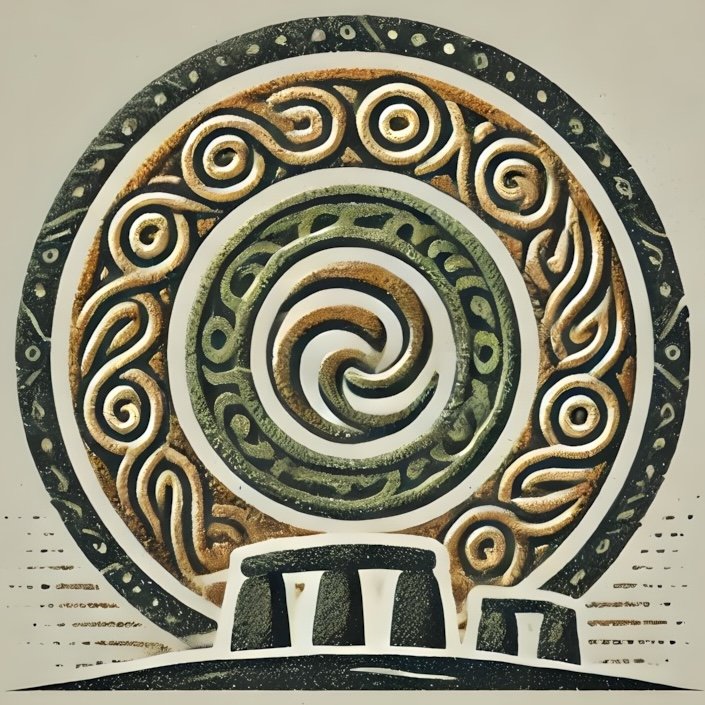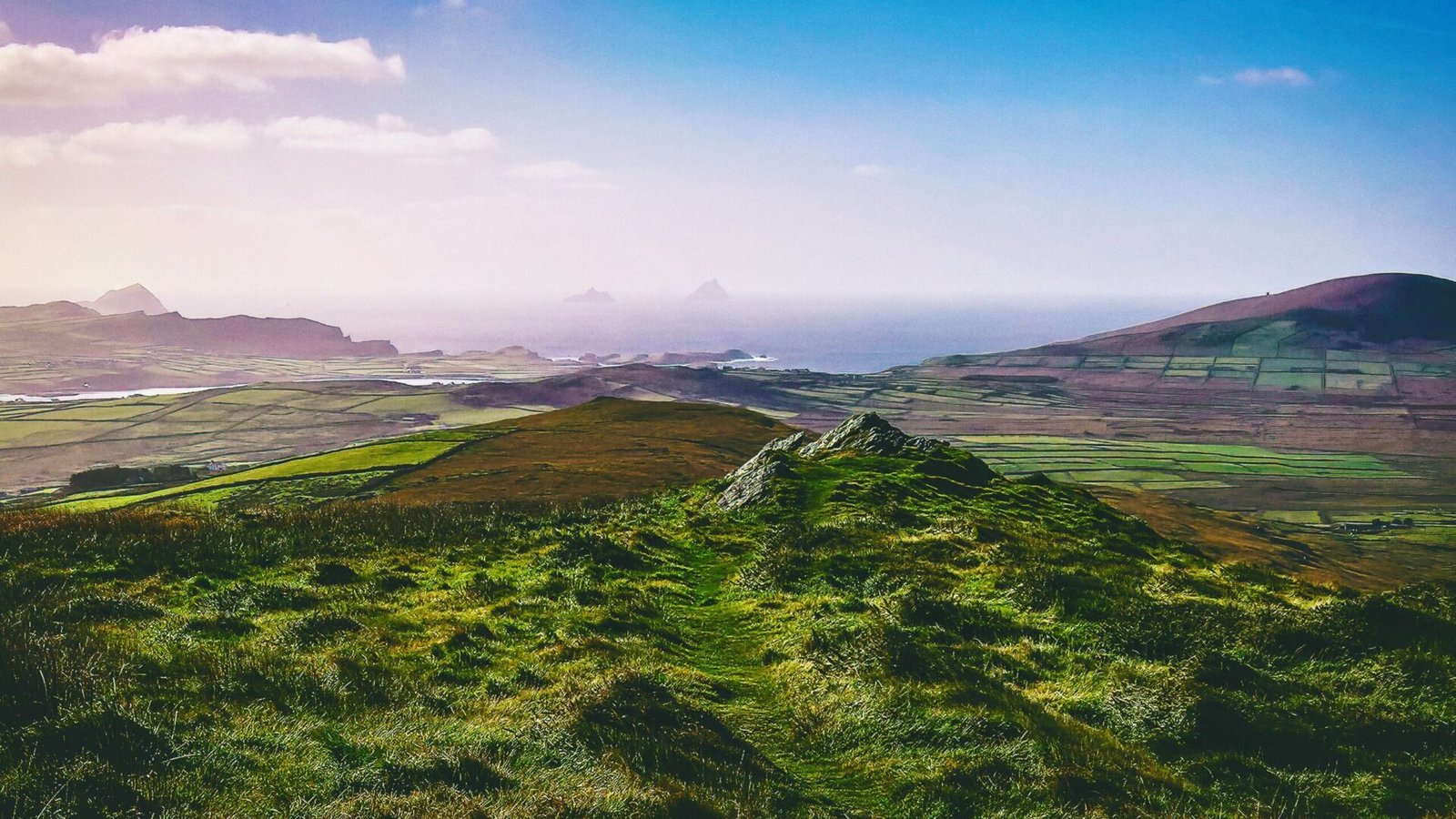In the mists of Ireland’s ancient past, the figure of the druid emerges as both a spiritual leader and a custodian of knowledge. The term “druid” is derived from the Gaelic word “druí,” which is thought to mean “oak” and “wise.” This connection to the oak tree, a sacred symbol in Celtic culture, underscores the druids’ deep relationship with nature and the spiritual world. These enigmatic figures were not merely priests but also philosophers, historians, and healers, serving as the bridge between the earthly realm and the divine.
Druids played a pivotal role in the religious practices of the Celts, guiding their communities through the complexities of life, death, and the cosmos. Their influence permeated every aspect of society, from governance to education, and their legacy continues to resonate in the landscapes and myths of Ireland today.
Druidic Hierarchy and Structure
Druidic society was structured in a hierarchical manner, reflecting the complexity of their roles and responsibilities. At the top of this hierarchy were the Bards, who were poets and storytellers, preserving the oral traditions of their people. Beneath them were the Ovates, seers and diviners who practiced prophecy and healing. The highest rank was held by the Druids themselves, who were the scholars and spiritual leaders, responsible for rituals, education, and the maintenance of sacred knowledge.
This structured hierarchy allowed for a rich tapestry of wisdom and practice, with each level contributing to the overall spiritual health of the community. The druids were often consulted by kings and chieftains, wielding significant influence in political matters and societal norms.
Druidic Beliefs and Cosmology
Druidic beliefs were deeply intertwined with nature, reflecting a worldview that saw the divine in every aspect of the natural world. They believed in a pantheon of gods and goddesses, each representing different elements of life and the cosmos. Central to their cosmology was the concept of the Otherworld, a mystical realm that coexisted with the physical world. This Otherworld was not merely a place of the dead but a source of inspiration, wisdom, and eternal life.
The druids practiced a form of animism, believing that all living things possessed a spirit. This belief fostered a profound respect for nature, leading to practices that honored the land, trees, rivers, and animals. The cycles of the moon and sun were also significant, guiding their agricultural practices and rituals.
Religious Practices and Rituals
Druidic religious practices were diverse and varied by region and community. Rituals often took place in sacred groves, stone circles, or near water sources, emphasizing their connection to the natural landscape. Key rituals included seasonal festivals, such as Samhain, Imbolc, Beltane, and Lughnasadh, which marked the turning points of the year and celebrated the cycles of life and death.
Rituals could involve offerings, sacrifices, and communal feasting, reinforcing social bonds and shared beliefs. The druids also performed rites of passage, such as births, marriages, and funerals, guiding individuals through the transitions of life. These ceremonies were imbued with symbolism, often incorporating elements from nature, such as fire, water, and earth, to invoke the presence of the divine.
Druids and the Landscape
The landscape of Ireland is dotted with sites that hold sacred significance, many of which are linked to druidic practices. From the ancient stone circles of Lough Gur to the mystical Hill of Tara, these locations serve as reminders of the druids’ deep connection to the land. The druids believed that certain sites were imbued with spiritual energy, making them ideal for rituals and gatherings.
The druids were also keen observers of the natural world, using their knowledge of the land to inform their practices. They understood the cycles of the seasons, the behavior of animals, and the growth patterns of plants, which allowed them to live in harmony with their environment. This intimate knowledge of the landscape is reflected in the myths and legends that have been passed down through generations, many of which are tied to specific geographical features.
Druids and Mythology
Druidic influence permeates Irish mythology, with many tales featuring druids as key figures. These stories often highlight the druids’ wisdom, magical abilities, and their roles as mediators between the gods and humanity. For instance, in the myth of Cú Chulainn, the druid Cathbad plays a crucial role in guiding the hero and foretelling his destiny.
The interplay between druids and mythical creatures, such as fairies and otherworldly beings, further emphasizes their connection to the mystical aspects of the landscape. The druids were seen as guardians of ancient knowledge, often possessing the ability to communicate with the Otherworld and access its wisdom.
Druids and Society
Druids held a unique position in Celtic society, serving as advisors to kings and leaders. Their counsel was sought in matters of war, governance, and justice, reflecting their significant influence on political affairs. The druids’ role as educators also contributed to the development of a literate and informed society, as they passed down knowledge through generations.
Despite their esteemed status, druids faced challenges, especially with the arrival of Christianity in Ireland. The conversion of the Irish people led to a decline in the traditional druidic practices, as new religious structures emerged. However, elements of druidic belief and practice persisted, often blending with Christian traditions to create a unique cultural synthesis.
Legacy of Druidism
The legacy of druidism is woven into the fabric of Irish culture, influencing literature, art, and modern spiritual practices. Today, many people are drawn to the teachings of the druids, seeking to reconnect with nature and the ancient wisdom of the past. The resurgence of interest in Celtic spirituality has led to a revival of druidic practices, with contemporary druids often focusing on environmental stewardship and community building.
Visiting key sites associated with druids, such as the Giant’s Causeway, Newgrange, and Dunluce Castle, allows individuals to connect with this rich heritage. These locations serve as portals to the past, inviting exploration and reflection on the profound relationship between the druids, the landscape, and the divine.
As we traverse the sacred landscapes of Ireland, we uncover the enduring spirit of the druids, whose teachings continue to resonate in our quest for understanding and connection with the world around us. The echoes of their wisdom remind us that the past is not merely a distant memory but a living, breathing part of our present and future.

